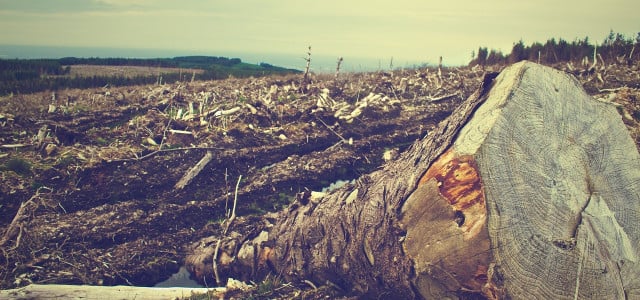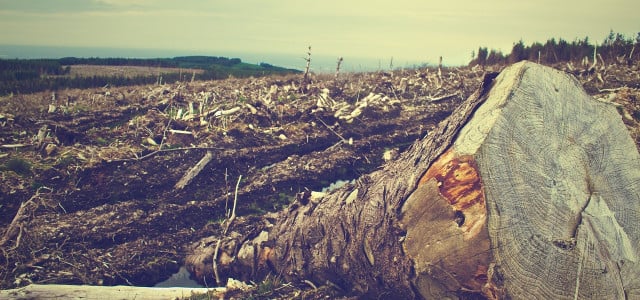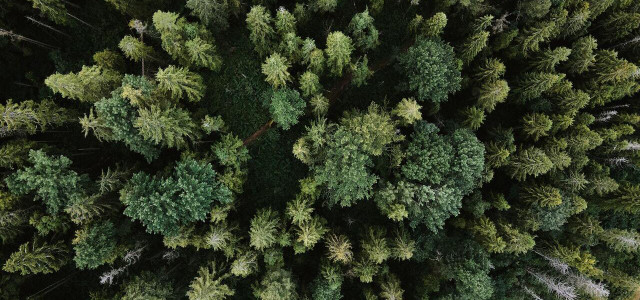There are in-between places in the environment that harbor a wide variety of life. This is where edge effects appear. But as humans impact these spaces, concern grows.
Edge effects are an interesting ecological phenomenon. Broadly, an edge effects is when changes in the climate affect the boundaries between two areas and the species that live within these areas.
However, while transitions in the environment do occur naturally, they are often the result of human interference. Here, we will discuss what the edge effects really are, how they happen, and what the impact of these effects might be.
What Are Edge Effects?
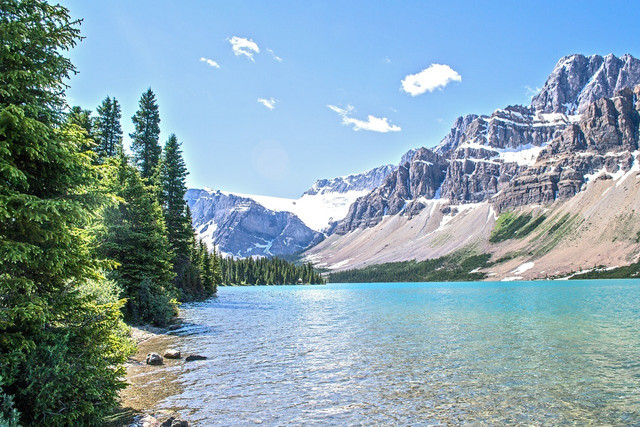
(Foto: CC0 / Pixabay / Wild0ne)
A habitat is a place where an animal or plant lives and thrives. There are many different types of habitats, like deserts, forests, oceans, and more. Each type of habitat has its own unique features and needs. In the sea, for example, there is coral that needs sunlight to survive, and in the forest, there are trees that need sunlight to grow.
“Edge effect” is a term that refers to the boundary between two habitats, and how changes therein affect the ecologcal community. It happens at the point where one habitat transitions into another, when a species starts into or out of the space between two habitats because of a change in climate, food, or other factors.
In other words, they are pushed into the boundaries of different habitats. For instance, if there is a city beside a forest, each area has its own unique characteristics that certain species call home. But when a forest is cut down, edge effects might mean animals start to migrate toward the edge of the city for food and shelter.
Edge effects can cause various consequences, sometimes positive and sometimes negative.
The Role of the Ecotone
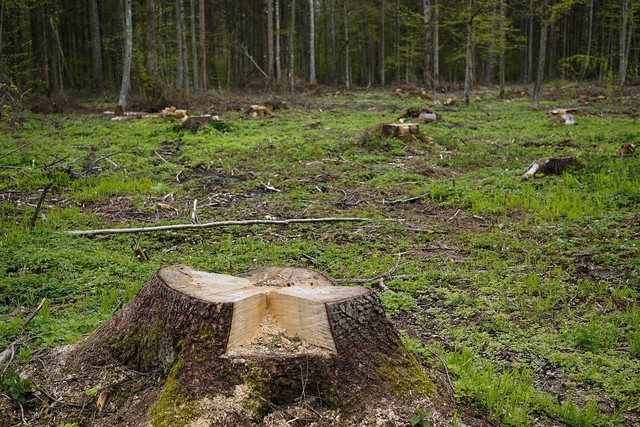


(Foto: CC0 / Pixabay / summa)
An ecotone is the transition area where two biological communities meet. It is therefore also the space that animals move into when an edge effect occurs. For instance:
- Marshlands — between dry and wet ecosystems
- Mangroves — between terrestrial and marine ecosystems
- Grasslands — between deserts and forests
- Estuaries — between saltwater and freshwater ecosystems
In essence, it is the region of transition between two different ecosystems or habitats. It is also one of the world’s most vulnerable regions because it is where two different ecosystems come into contact with each other and can disrupt each other.
In research, the ecotone is often in focus as a hotspot where we see a lot of biodiversity — that is, a variety and abundance of different species. Scientists believe that these hotspots may be the place where new species are born, learn to adapt to different climates, and form some kind of resistance against climate change. And for these reasons, they are very important to conserve. Environmental stewardship, for example, is just one of many ways to protect these vulnerable habitats.
However, the formation of ecotones doesn’t always have a positive effect. As scientists explain, not all species are well-suited to ecotonal areas. For instance, for a species that usually lives in a forest, the edges of the forest can be a difficult place to survive. There is less cover and vegetation, and predators can spot them more easily. When they are forced into these spaces by changes in the boundaries of the forest, high mortality may follow.
Similarly, species well adapted to the ecotones may suffer when these areas are reduced. The survival of species, when faced with changes to the ecotone, varies because there are many different types of ecotonal areas. There are also artificial ecotones caused by:
- Agriculture
- Urbanization
- Forestry activities
- Grazing
These are called anthropogenic edges or human-generated edges, and there are some differences between the effect of these edges compared to natural ones.
Natural vs. Anthropogenic Edges and Ecotones



(Foto: CC0 / Pixabay / jggrz)
While natural edge effects can create permanent ecotonal areas, edge effects can also be caused by human impact. These anthropogenic edges create their own ecotone. However, these spaces often have a different dynamic when compared to natural ones.
In 2017, there was a large-scale analysis of the difference between human (anthropogenic) and natural ecotones. It was based on studies conducted on multiple continents using beetles. The scientists measured how different influences affected the biodiversity on naturally emerged vs. human-made edges. They found:
- Ecotones created by natural processes (for instance, forests and grassland) had far higher levels of species richness. Species richness is a measure of the number and distribution of species in a given place — in this case, on the edge of a forest, there were more beetle communities than in the forest itself.
- However, in contrast, species richness was not higher on edges that were continually influences by humans than on the interiors of either habitat.
They also found that the way species moved differed between natural and artificial ecotones: with man-made ecotones, different species move in and out of the edge and the forest freely. In natural ecotones, on the other hand, most species are more constrained to stay within either habitat, or respectively, within the ecotone itself, and cannot move around between the areas flexibly.
This meant two things: when the beetles felt threatened, they could return to the forest. But conversely, it also meant they had less protection from other species for which the human-made edges are also more penetrable.
Suffice to say, how the ecotone is managed can have a significant effect on the local ecology. Natural edges are important, but there are ways human-influenced edges might help conserve ecotones. We’ll look at some examples of both negative and positive human influences.
Negative Examples of the Edge Effect



(Foto: CC0 / Pixabay / mostafa_meraji)
Urbanization is one of the leading causes of man-made edge effects. At present, 55 percent of the global population lives in urban areas. These developments have changed the landscape significantly. Most notably:
- Artificial surfaces covering the soil
- Hotter temperatures in cities
- Pollution
- Changes in wind and water
Read more: Which Human Activities Contribute to Air Pollution — And How?
As a result, the animals living on these edges can become stressed. They are used to certain conditions and activities, but things sometimes change too rapidly for them to adjust. As research shows, this can cause negative effects relating to:
- Ability to survive
- Population growth
- Body size
- Changes in behavior
- Loss of food sources
- Population fragmentation and isolation
Here we see how urbanization can affect the lives of creatures living in ecotonal areas. However, in agricultural land, edge effects can also impact man-made habitats. A study of the effect of reducing ecotonal area in favor of fields and managed land and the effects on insect behavior showed the following: when threatened, instead of retreating back toward the forest, the insects went toward the fields and attacked the crop growing there.
In each case, edge effects that damage ecotonal areas can disadvantage both sides. But does this mean there are no positive examples of the edge effects caused by humans?
Positive Examples of the Edge Effect
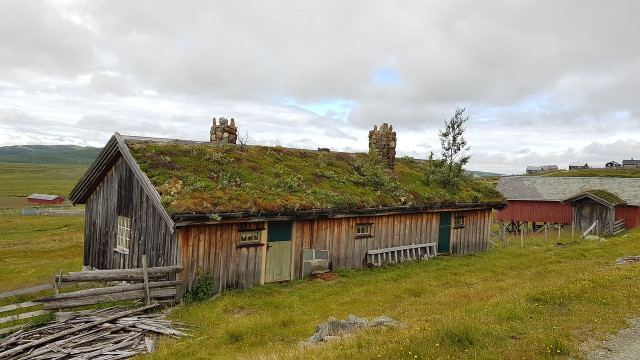


(Foto: CC0 / Pixabay / Fee73)
There have been several studies that show urban edges can be beneficial to surrounding species if they are carefully designed and planned.
A paper on the architecture of Icelandic urbanization exemplifies this: Iceland is a place with many different terrains and therefore presents the possibility of many types of ecotones. However, within the urban edges of the landscape, earlier settlers made houses from turf and other natural materials. Since the urban areas did not create such a stark contrast to their natural counterparts, the researchers suggest these edges did not create as much impact on the natural environment. This is now being tested on more modern approaches to design.
More recently, studies suggest that urban areas that include greenspaces provide shelter against the negative impacts of human-made edges by providing shelter and protecting biodiversity. The bigger these edges or green spaces, the more positive the outcome.
Read more: Garden City Movement: History, Examples and Criticism
In the future, by connecting urban areas with green corridors and joining these spaces together, we might improve the lives of humans and nonhumans alike.
Takeaways
With our rapidly increasing human population, there is an increasing need for green spaces and natural edges to become more available in urban and man-made environments. These spaces have a high level of biodiversity and are important for the health of our planet. They also provide a number of benefits for humans and animals, such as cleaner air and water, recreation opportunities, and more. And, with a little green innovation, we can go a long way in protecting these special places.
Read more:
- How to Start a Community Garden in 8 Steps
- What Are CSA Farms? A Guide to Community Supported Agriculture
- Nature-Based Solutions: A Sustainable Approach to Save the Planet
Do you like this post?






